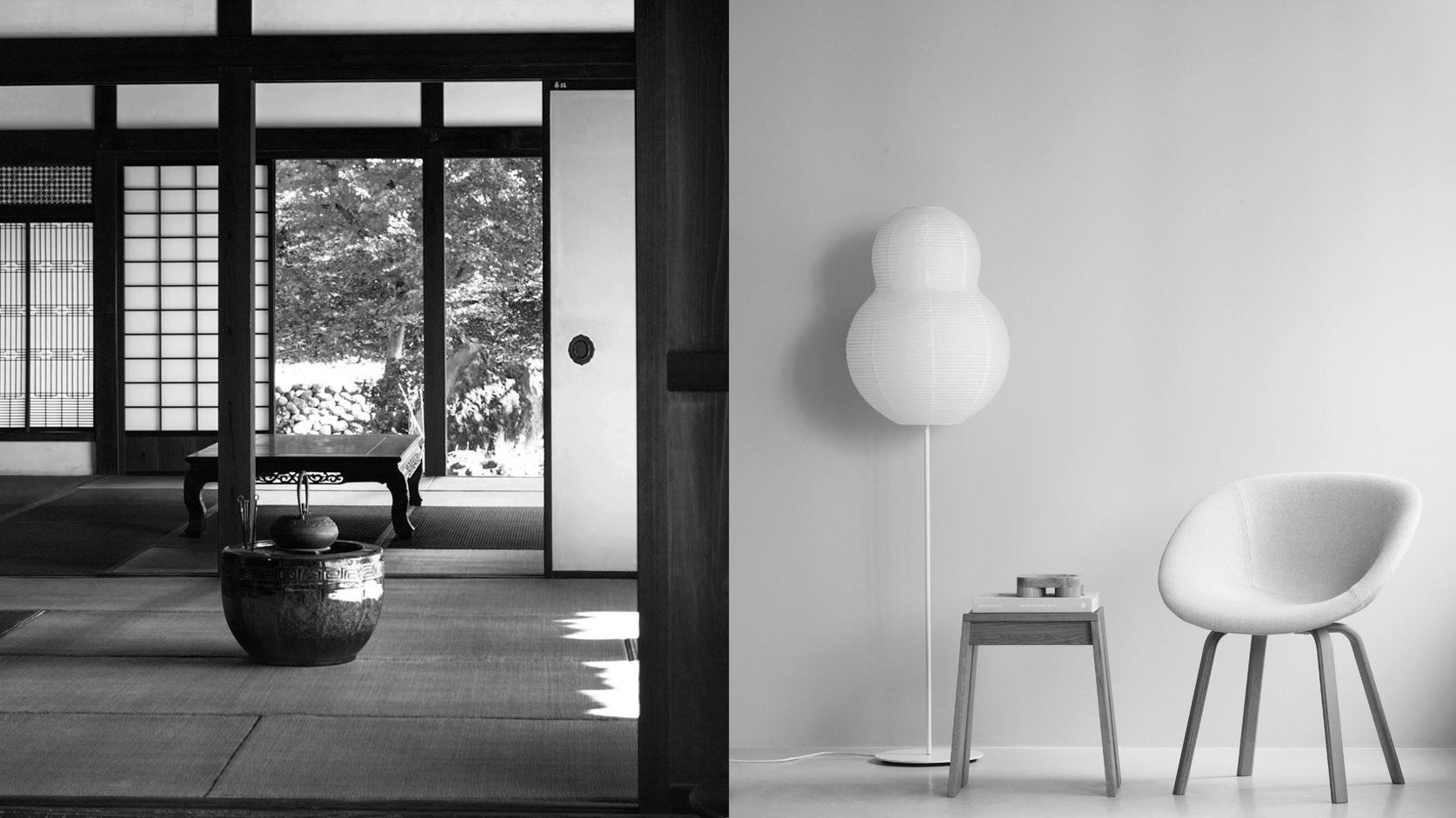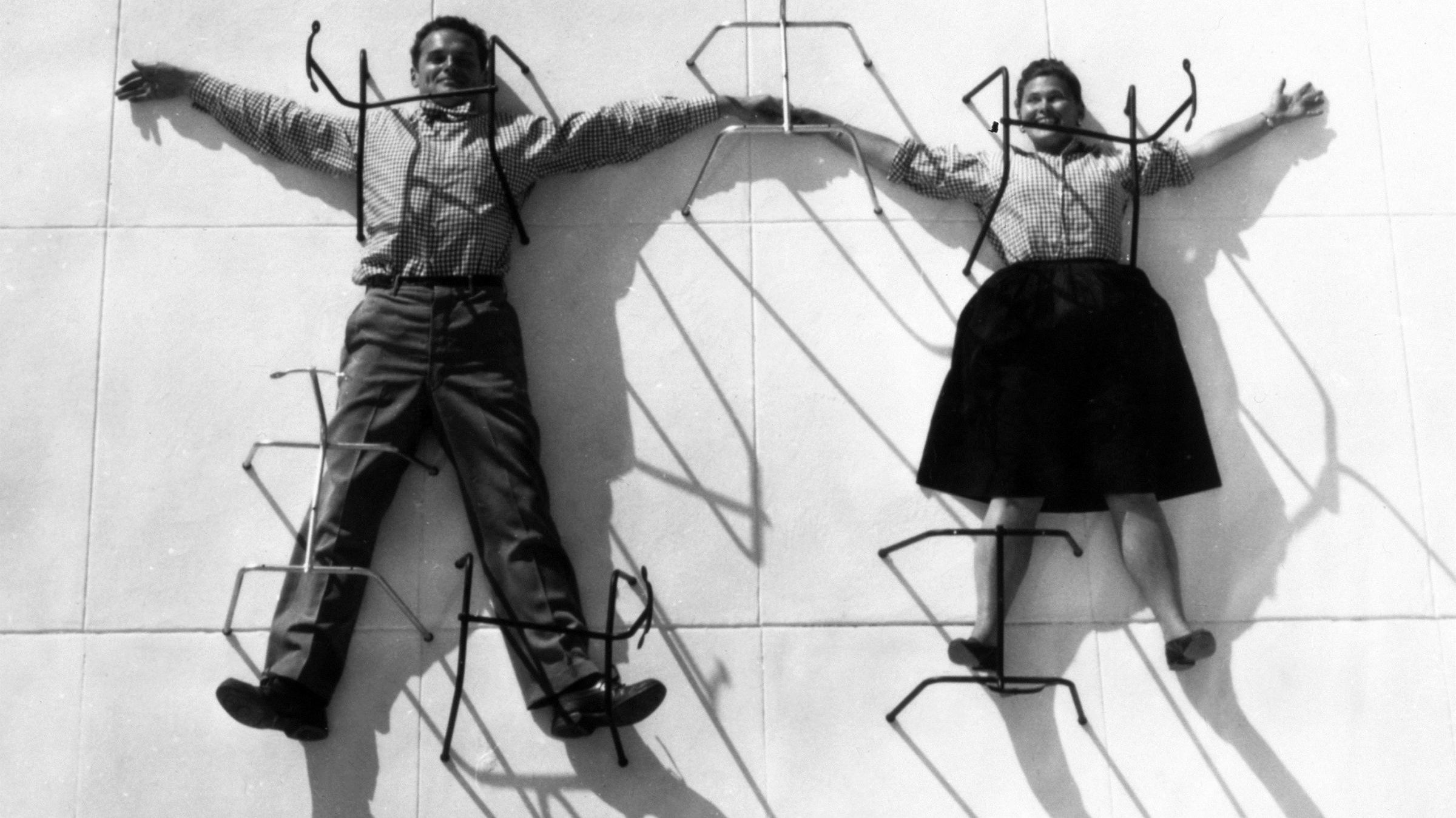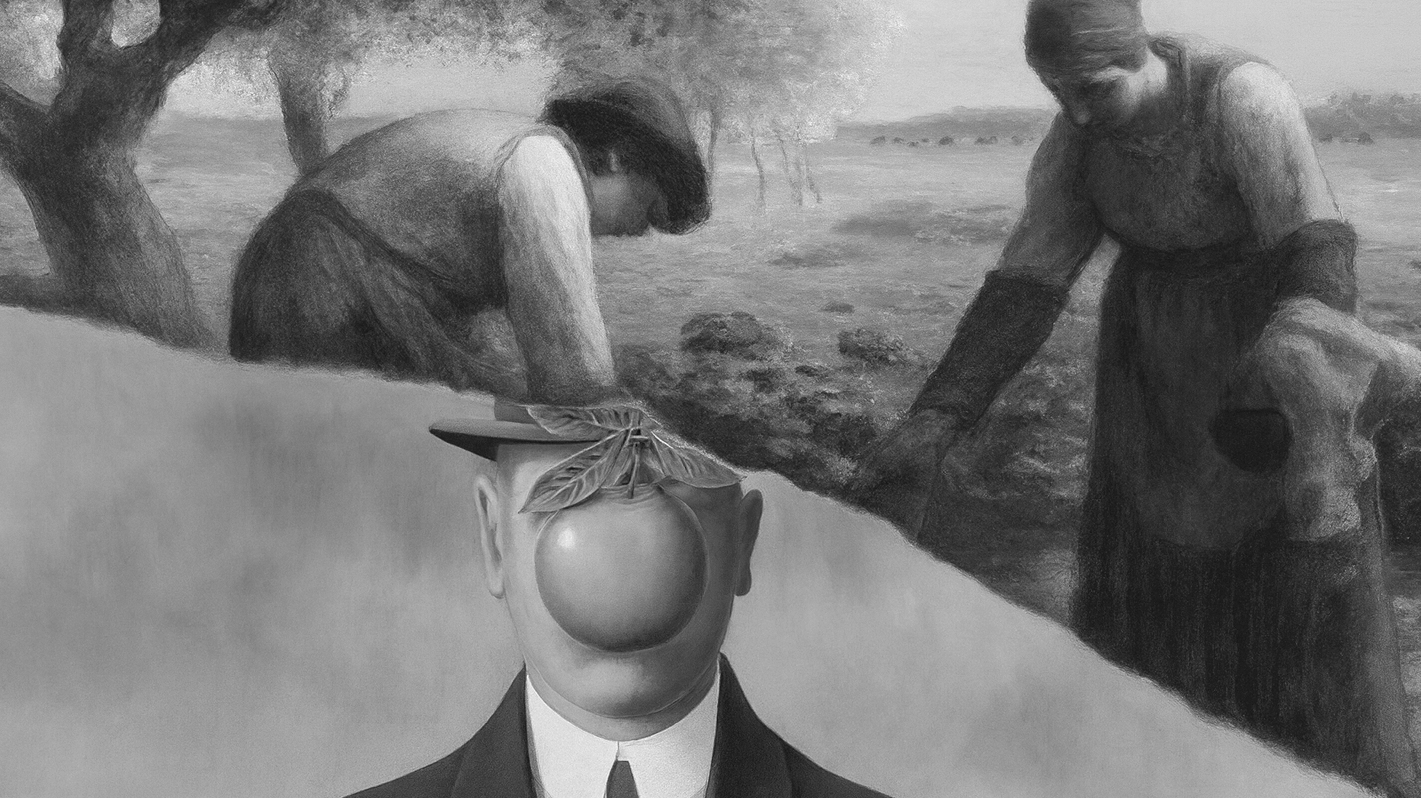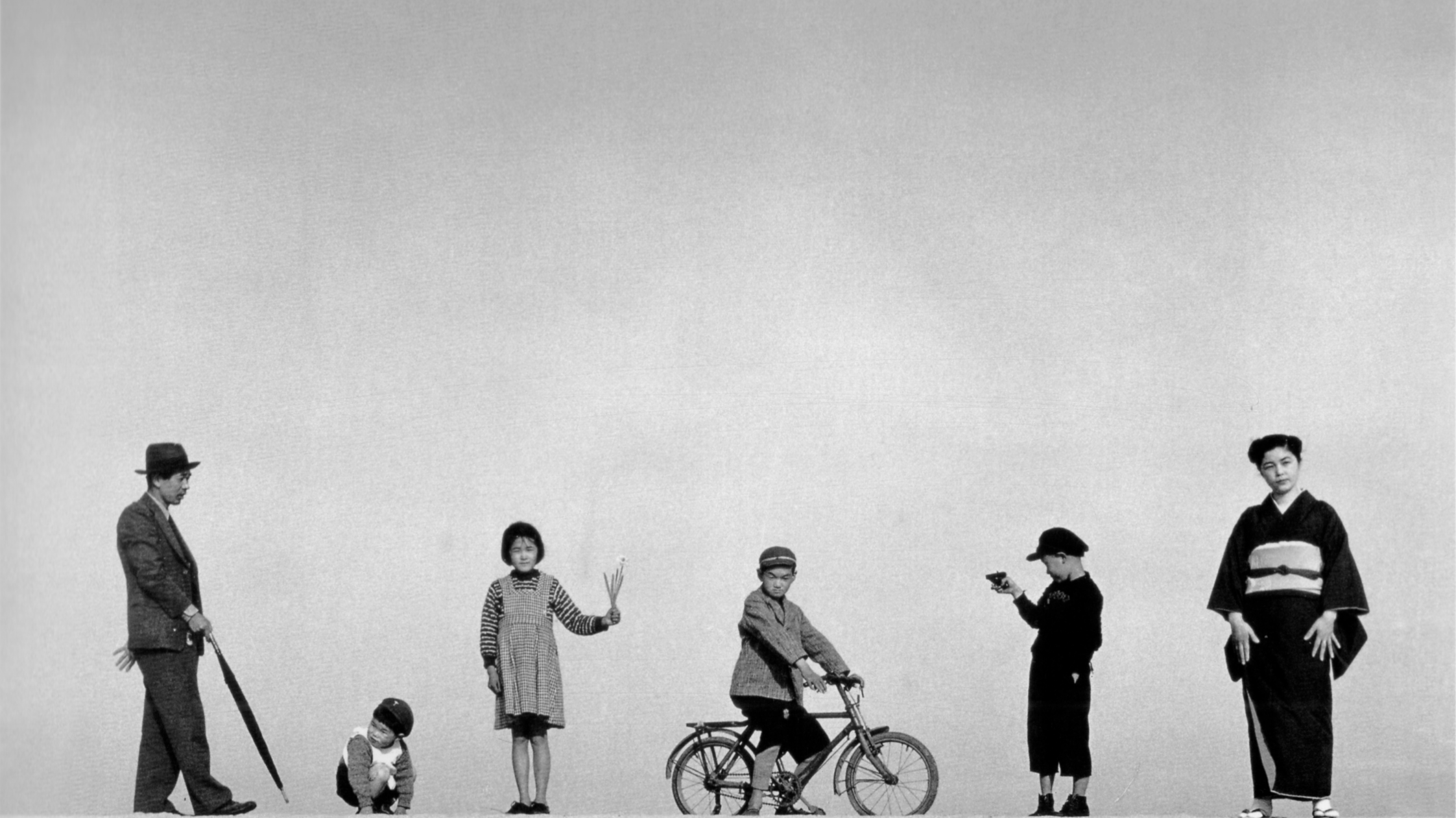Speaking of fashion designers, while Coco Chanel is widely known, it's worth mentioning that her greatest rival, Elsa Schiaparelli, has gained more attention in recent years as her contributions to fashion are increasingly recognized. Not only did she defy the conventions of her time, but she also created designs that incorporated humor and surprise. Elsa Schiaparelli's avant-garde and surrealist contributions to the fashion world are phenomenal. In this article, let's learn about one of the most significant role in the world of haute couture — Elsa Schiaparelli.
(Elsa Schiaparelli: Where Surrealism Art Meets Haute Couture - dans le gris)
Italian fashion designer Elsa Schiaparelli in her own creation. Photo by George Hoyningen-Huene, Vogue, September 1, 1932.
(Elsa Schiaparelli: Where Surrealism Art Meets Haute Couture - dans le gris)
Rising from Nobility
Elsa Schiaparelli (1890-1973) was born in Rome to a father who served as the director of the Lincei library and was a professor of Oriental literature, an astronomer uncle, and a mother descended from the Medicis. She grew up in a family of aristocrats and intellectuals, and the cultural background and erudition of her family members served to ignite the imaginative faculties of Elsa Schiaparelli's impressionable childhood years. In 1911, she published a collection of overtly sensual poems titled "Arethusa." When her parents learned about it, she was sent to a convent in Switzerland, from which she left after going on a hunger strike. Elsa Schiaparelli was dissatisfied with a lifestyle that, while refined and comfortable, she considered cloistered and unfulfilling.
(Elsa Schiaparelli: Where Surrealism Art Meets Haute Couture - dans le gris)
Parisian Beginnings
In the late 1920s, Elsa Schiaparelli settled in Paris, where she met Paul Poiret, a highly influential figure in the Parisian fashion scene, often referred to as the "King of Fashion." Although lacking formal training as a designer, Elsa Schiaparelli's artistic sensibilities and keen eye for style captured the attention of Paul Poiret. Recognizing her potential, he offered her a position as a designer in his atelier. The French couturier, who would eventually become one of her best friends, greatly encouraged her to unleash her creativity. However, their collaboration was relatively short-lived, as Elsa Schiaparelli's independent and innovative spirit soon led her to establish her own fashion house in 1927.
(Elsa Schiaparelli: Where Surrealism Art Meets Haute Couture - dans le gris)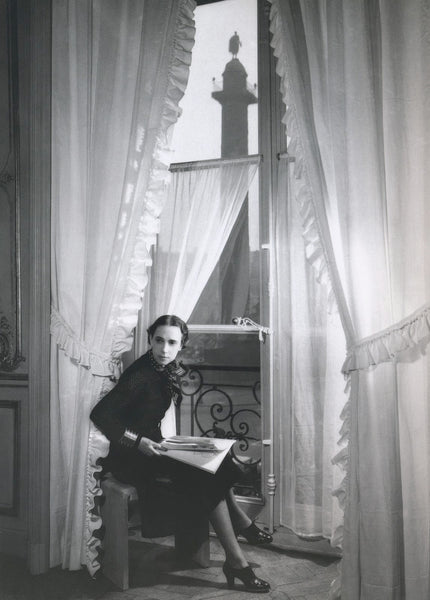
Elsa Schiaparelli, photographed by François Kollar, in a window display of her showroom at 21 Place Vendôme in Paris, 1935.
Elsa Schiaparelli's design career was early on influenced by couturier Paul Poiret, renowned for discarding corseted, over-long dresses and promoting styles that allowed freedom of movement for the modern, elegant, and sophisticated woman — features synonymous with Art Deco fashion. Elsa Schiaparelli's design approach relied on both the impulse of the moment and serendipitous inspiration as the work progressed. She draped fabric directly on the body, sometimes using herself as the model. These early designs, while more conservative than her later work, incorporated her quirky and imaginative aesthetic.
(Elsa Schiaparelli: Where Surrealism Art Meets Haute Couture - dans le gris)
Surrealist Haute Couture and Artistic Collaborations
In 1935, Elsa Schiaparelli was a leader in haute couture and rapidly expanding into jewelry, perfume, cosmetics, lingerie, and swimsuits. During this period, Surrealism emerged as one of the most influential art movements. Despite facing opposition from some Surrealists, the movement began to cross over into the commercial and material world. Elsa Schiaparelli, however, stood out as the only fashion designer to interpret Surrealism successfully. She saw in Surrealism a means to break free from the constraints of traditional aesthetics and explore new and imaginative possibilities. Elsa Schiaparelli translated surrealistic concepts into tangible, wearable pieces. For instance, Elsa Schiaparelli and Salvador Dalí created the shoe hat for the Schiaparelli Winter 1937-38 Haute Couture collection, inspired by a photo taken by Dalí's wife, Gala, of her husband wearing a woman's shoe as a hat.
(Elsa Schiaparelli: Where Surrealism Art Meets Haute Couture - dans le gris)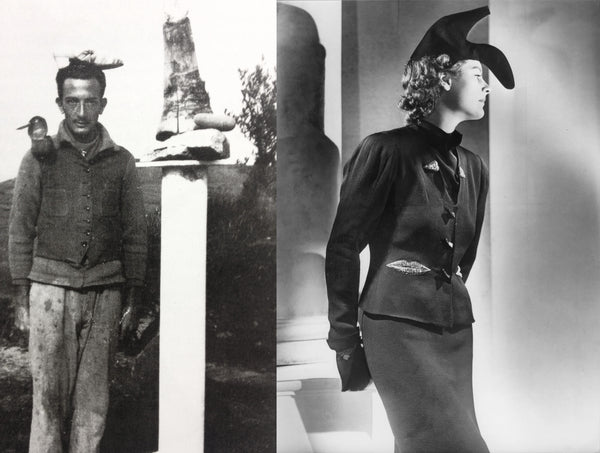
Left: Salvador Dalí photographed by Gala Dalí in 1932. Right: Schiaparelli shoe hat, 1937.
(Elsa Schiaparelli: Where Surrealism Art Meets Haute Couture - dans le gris)
"For me, dress designing is not a profession but an art."— Elsa Schiaparelli
Elsa Schiaparelli had numerous artistic collaborations with renowned artists, resulting in unique fashion and imaginative creations that blurred the lines between fashion and art. Her first collaboration was with Russian-French writer Elsa Triolet to create the iconic "Aspirin Necklace", composed of porcelain beads reminiscent of pain-relieving tablets. This marked the beginning of Elsa Schiaparelli's extensive collaborations, during which she worked with some of the most brilliant minds of her era, including Jean Cocteau, Alberto Giacometti, Salvador Dalí, Man Ray, Méret Oppenheim, and others.
(Elsa Schiaparelli: Where Surrealism Art Meets Haute Couture - dans le gris)
Elsa Schiaparelli and Salvador Dalí, circa 1949.
(Elsa Schiaparelli: Where Surrealism Art Meets Haute Couture - dans le gris)
Elsa Schiaparelli and Coco Chanel's Fashion Rivalry
It's not hard to imagine the rivalry between these two iconic figures in the world of fashion, as Elsa Schiaparelli and Coco Chanel were both prominent fashion designers during the early to mid-20th century. The rivalry reflects contrasting styles, philosophies, and personalities. Coco Chanel's design approach is rooted in simplicity and elegance, with a focus on functionality. On the other hand, Elsa Schiaparelli appears as more bizarre and often humorous, collaborating with artists and creating whimsical and imaginative pieces. Coco Chanel even once dismissed Elsa Schiaparelli as "That Italian artist who is making clothes."
However, due to security and business uncertainties precipitated by World War II, Elsa Schiaparelli moved to New York. After four years, she returned to Paris and resumed her career. Her influence was eclipsed by the emergence of a new generation of couturiers, most notably Christian Dior and Cristobal Balenciaga. In 1954, Elsa Schiaparelli decided to close the Couture House and devoted herself to her autobiography, "Shocking Life." In contrast, the same year that her great rival Coco Chanel returned to the business and became a household name, people started to forget Elsa Schiaparelli.
(Elsa Schiaparelli: Where Surrealism Art Meets Haute Couture - dans le gris)
Elsa Schiaparelli's Iconic Collaborations and Designs
(Elsa Schiaparelli: Where Surrealism Art Meets Haute Couture - dans le gris)
Schiaparelli Necklace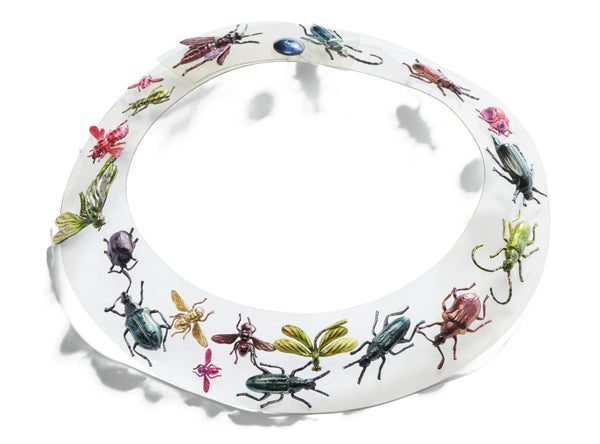
Schiaparelli Necklace, Made by Jean Clément, Couture, Fall 1938. Photo Credit: Sothebys.
This necklace is from Schiaparelli's fall 1938 pagan collection, made by Jean Clemént, drawing inspiration from Botticelli's lush paintings. It serves as an embodiment of Elsa Schiaparelli's surrealist tendencies and is crafted from clear Rhodoid, a type of cellulose acetate plastic. The multicolored insects create the illusion of resting directly on the wearer's skin. The surreal concept of insects appearing to crawl on the wearer's skin is presented as a bold fashion statement. At the time, Rhodoid, regarded as a newly developed material, reflects Elsa Schiaparelli's fearless approach to utilizing inventive materials in her designs, infused with the element of surprise.
(Elsa Schiaparelli: Where Surrealism Art Meets Haute Couture - dans le gris)
Trompe-l'oeil Women's Gloves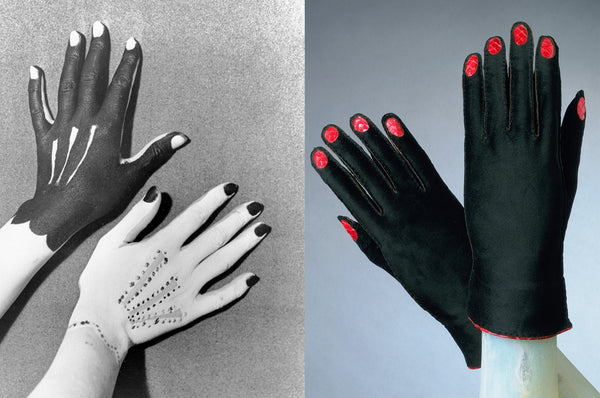
Left: Hands painted by Picasso, photographed by Man Ray, 1935. Right: Hands Painted In Trompe-l'oeil Imitating Gloves by Elsa Schiaparelli.
The left image shows hands painted by Pablo Picasso to resemble gloves, photographed by Surrealist artist Man Ray. This inspired Elsa Schiaparelli to create her famous black gloves with nails, featuring appliquéd red snakeskin fingernails on a stark background, as shown in the right image. Elsa Schiaparelli perceived herself as an inventor (but never a creator, a term she deemed pretentious), freed by her lack of formal training to experiment unrestrainedly with a variety of manufacturers and artist friends.
(Elsa Schiaparelli: Where Surrealism Art Meets Haute Couture - dans le gris)
Lobster Dress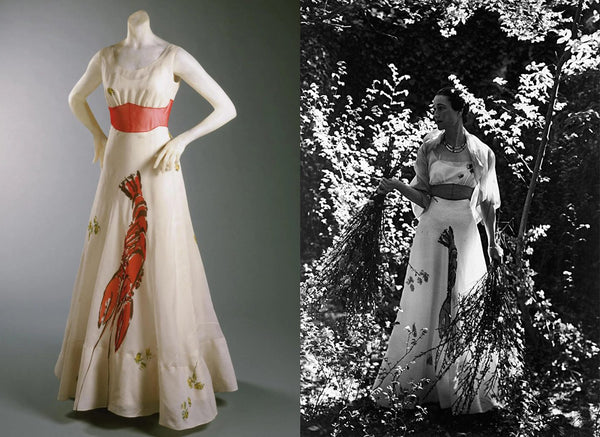
Left: Lobster Dress, designed by Elsa Schiaparelli in collaboration with Salvador Dalí, 1937. Right: The Duchess of Windsor wearing the lobster dress, photographed by Cecil Beaton, 1937.
There is no doubt that among the many collaborations between Elsa Schiaparelli and Salvador Dalí, the lobster dress is one of the most famous pieces. This gown is part of the Schiaparelli Summer 1937 Haute Couture collection, featuring a large lobster painted by Salvador Dalí. According to legend, Dalí wanted to apply real mayonnaise to the dress, but Schiaparelli refused the idea. Furthermore, the lobster dress was immortalized by Wallis Simpson, one of the 18 pieces from the trousseau designed by Elsa Schiaparelli for her marriage to the Duke of Windsor. The future Duchess caused a sensation in this attire, especially through Cecil Beaton's photographs published in Vogue.
(Elsa Schiaparelli: Where Surrealism Art Meets Haute Couture - dans le gris)
Fur Bracelet 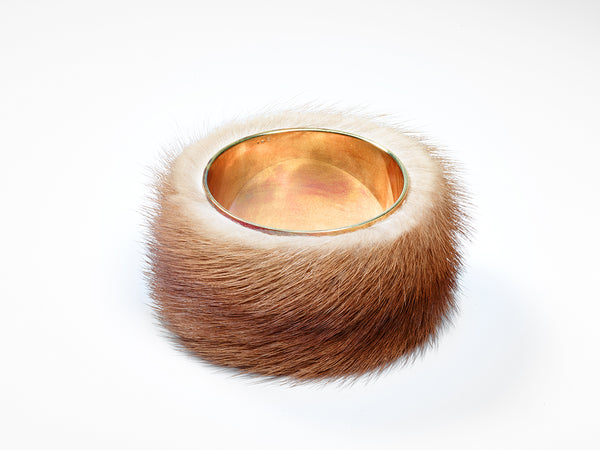
Metal and fur bracelet designed by Méret Oppenheim, included in Schiaparelli's Winter Collection, 1936.
Méret Oppenheim and Elsa Schiaparelli were both representative figures in the Surrealist movement during the 20th century. Their collaborations enriched the world of Surrealism, fashion accessories, and art history. In 1936, Méret Oppenheim designed a fur bracelet, which Elsa Schiaparelli included in her winter collection. Reportedly, this piece served as a precursor to the artist’s iconic fur-covered teacup, known as Le Déjeuner en fourrure or Breakfast in Fur. Even today, this bracelet continues to showcase the avant-garde humor of Schiaparelli's spirit.
(Elsa Schiaparelli: Where Surrealism Art Meets Haute Couture - dans le gris)
Fragrance Trio: Soucis, Salut, and Schiap.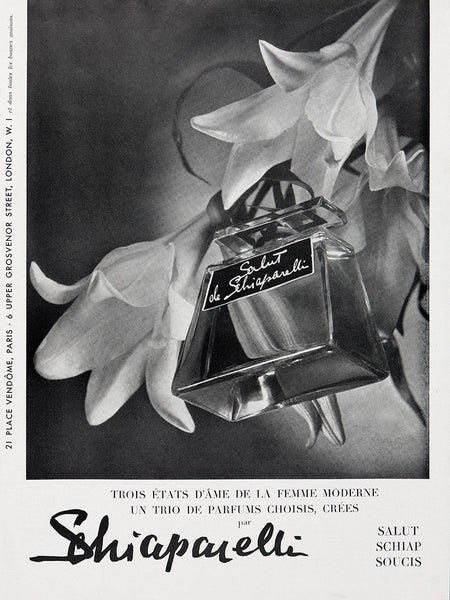
Advertising for the perfume "Salut" by Schiaparelli
In 1934, The House of Schiaparelli (Maison Schiaparelli) launched a trio of perfumes as part of its first fragrance collection: Soucis, Salut, and Schiap. The modern bottles were designed by the French interior designer Jean-Michel Frank, who was not only Elsa Schiaparelli's friend but also her longtime collaborator.
The clean and graphic lines of their trapezoidal shape were characteristic of the aesthetic of the most important French decorator of his time. The fragrance came in a rectangular case crafted from cork, a modest material that challenged the existing norms of luxury, signaling a move towards a more radically modern approach. Moreover, this trio of perfumes introduced an interesting and pioneering concept as it was intended to be worn during different times of the day: Schiap for daytime, Soucis for cocktail hour, and Salut for the evening.
(Elsa Schiaparelli: Where Surrealism Art Meets Haute Couture - dans le gris)
Shocking Pink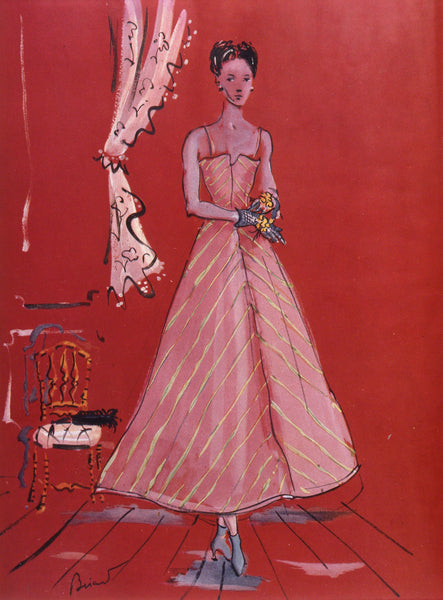
Dress by Elsa Schiaparelli, illustrated by Christian Bérard, featured in Vogue, 1937.
Elsa Schiaparelli's aesthetic was liberally seasoned with Surrealism and daring, and the vibrant and bold shade of pink became synonymous with her fashion designs. In 1937, Elsa Schiaparelli released the Shocking fragrance simultaneously with Shocking Pink, a color that later became her signature. It was dubbed thus because it represented her desire to shock those around her with her unique and sometimes avant-garde designs. Clearly, Elsa Schiaparelli successfully made shocking pink remain a symbol of her audacious and boundary-pushing style in the world of haute couture.
(Elsa Schiaparelli: Where Surrealism Art Meets Haute Couture - dans le gris)
Continue Reading:
• Art Deco: A Complete Guide to Roaring Twenties Decorative Style
• Surrealism in Art: From the Unconscious Dream to Artistic Reality
• Man Ray's Surrealist Photography: Style, Portraits and Fashion
(Elsa Schiaparelli: Where Surrealism Art Meets Haute Couture - dans le gris)
About Us
Dans Le Gris is a brand that started with everyday jewelry; each handmade piece is designed and crafted in Taiwan. We deeply value every detail, dedicating ourselves to creating enduring pieces through collaboration with experienced craftsmen.
(Elsa Schiaparelli: Where Surrealism Art Meets Haute Couture - dans le gris)
In our journal, we provide irregular updates featuring articles about art, culture, and design. We aspire to furnish our readers with profound insights and inspiration across a broad array of creative subjects. From the daily inspirations found in art and design to the timeless beauty of traditional craftsmanship and philosophy, our curated content encompasses diverse aspects of life.

